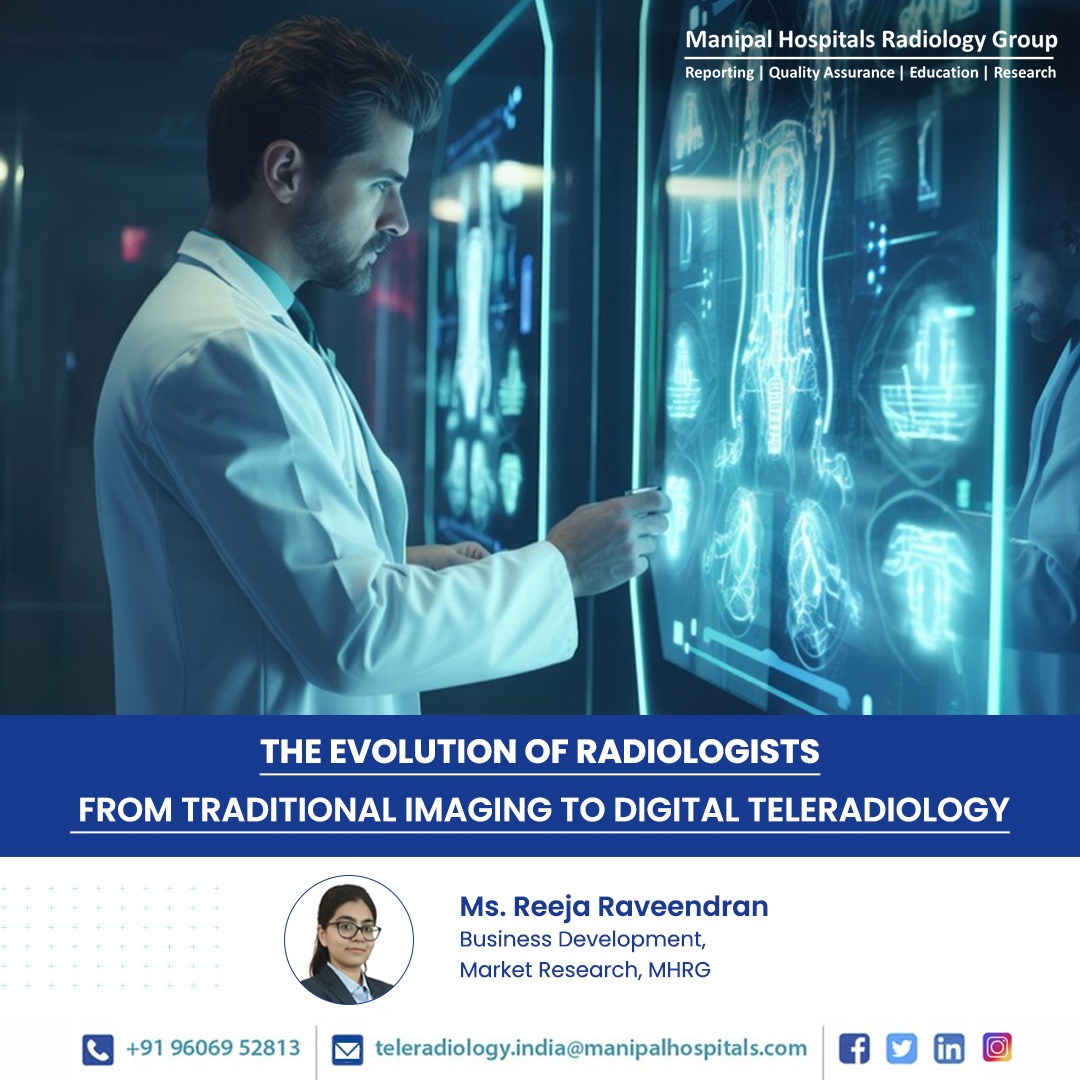In the ever-evolving field of medicine, radiology stands out as one of the most dynamic specialties, driven by rapid technological advancements. The journey from traditional radiology to the modern landscape of digital teleradiology represents a transformative shift that has redefined how radiologists work and interact with the healthcare system.
The Traditional Landscape: A Foundation of Imaging
In the early days, radiology primarily involved film-based imaging technologies such as X-rays, CT scans, and MRIs. Radiologists worked with physical films and had to rely on manual processes for image analysis and storage. The workflow was time-consuming, with images needing to be physically transported between departments and often requiring significant time for analysis and report generation.
Radiologists during this era were heavily dependent on the availability of films and the physical infrastructure of hospitals. The need for better, faster, and more accurate diagnostic tools was evident, setting the stage for the digital revolution in radiology.
In the pre-digital era, a radiologist typically reviewed and interpreted about 50-100 films per day. Each film could take several minutes to process and interpret manually. Radiologists often worked 10-12 hours per day, and on-call hours were common, leading to extended workweeks. There was no system of TAT and it would sometime take days for the report to reach the patient, effecting the timely diagnosis and treatment.
During the forecast period, medical imaging centers are anticipated to experience the highest compound annual growth rate (CAGR) of 15.3%. This growth is primarily driven by the increasing geriatric population, who are more susceptible to chronic conditions, thereby leading to a higher adoption rate of imaging devices for diagnosis and treatment planning.
The Digital Revolution: The Rise of PACS
The first major leap came with the introduction of Picture Archiving and Communication Systems (PACS) in the 1980s and 1990s. PACS revolutionized radiology by digitizing images, allowing for easier storage, retrieval, and sharing of medical images. This shift from film to digital formats marked a significant improvement in image quality and accessibility. In 2022, teleradiology reading platform services commanded the largest market share, accounting for 33.6% PACS systems enabled radiologists to view images on computer screens rather than relying on physical films. This advancement facilitated faster and more accurate diagnoses and improved the ability to store and manage large volumes of imaging data. However, while PACS significantly improved the efficiency of image handling, it still required radiologists to be on-site or have a secure connection to their hospital’s network.
Before the introduction of PACS in India, approximately 15,000 to 30,000 X-rays and 5,000 to 10,000 CT/MRI studies were conducted annually. In contrast, according to a WHO report, approximately 3.6 billion diagnostic procedures are now performed globally each year, with 360 million of these examinations being conducted on pediatric patients. This shift in the number of diagnostic imaging performed shows significantly how innovation and implementation of PACS has revolutionized the growth in radiology.
The Emergence of Teleradiology: A New Era of Flexibility
The next transformative step in radiology came with the advent of teleradiology, a technology that allows radiologists to interpret medical images remotely. Teleradiology leverages digital image transmission over the internet, enabling radiologists to provide diagnostic services from virtually anywhere. In this fast-moving healthcare environment, where technological developments have changed the way radiology is practised in this ever-changing field called healthcare, providing radiologists with unheard exposure for developing their careers and improving patient care. Evolution of teleradiology has developed into a technique improving efficiency and meeting global demand for more specialized diagnostic expertise.
Teleradiology offers several advantages:
- Meeting the Surge: Rising Need for Radiologists :
India currently has approximately 20,000 radiologists serving a population exceeding 1.4 billion, resulting in a ratio of one radiologist per 100,000 individuals. This ratio falls significantly short of the ideal standards set by global healthcare organizations. With only one radiologist available to interpret results for every 100 diagnostic scans performed daily, the scarcity of radiologists impedes the timely reporting of emergency cases. This directly affects patient mortality rates and leads to delays in essential treatments and surgeries due to the inability to accurately diagnose conditions. While the implementation of AI-based technology is enhancing the turnaround times for radiology reports in Tier I and Tier II cities, the shortage remains a critical issue. Radiologists are accessible on-demand in private hospitals within well-developed urban areas, but the shortage persists severely in Tier II and Tier III cities.
- Enhanced Access and Impact
Teleradiology has contributed a lot toward the greater access of radiological expertise. With the help of telecommunications technology, it is now possible for radiologists to access medical images from any distant location, rendering timely diagnoses and consultation services to patients from any geographical location. Such ease of access speeds up the process of care but also enhances professional scope for radiologists, all the while helping in high-profile complex medical cases from a distance through collaboration with healthcare providers.
- Expediting Horizons: Visibility and Collaboration
Teleradiology has raised the visibility of radiologists within healthcare ecosystems. In this virtual platform, radiologists could join multi-disciplinary teams that help in enhancing the strategies for patient management through insights and expertise. This sets the scene for continuous professional development, comprehensive, holistic care for patients across a range of medical specialties.
- Future Trends: Role of Technology and Demand Projections
The future for teleradiology remains bright with continuous growth and innovation. The trend currently is shifting to the integration of artificial intelligence and machine learning algorithms with teleradiology platforms for better diagnostic accuracy and efficiency. Studies estimate that in the next couple of years, a significant percentage of radiology practices will start doing so in the work line with AI tools, increasing the potential of radiologists and easing workflow processes.
- Navigating Challenges: Regulatory Frameworks and Technological Integration
As deep as the advantages of teleradiology run, there are challenges related to jurisdictional regulatory complexity and an enhanced requirement for strong cybersecurity for patient information protection. Dialogue between healthcare policy framers, technologists, and radiologists is needed to ensure telemedicine practices will operate ethically and securely. To surpass these obstacles, there needs to be constant dialogue among healthcare policy framers, technologists, and radiologists.
- Empowering Radiologists in the Digital Age
It is a very powerful, transformational force in present healthcare system that empowers radiologists to grow both professionally and in their delivery of excellent patient care worldwide. Such integration among teleradiology and advanced technologies would be critical in shaping the future course of diagnostic imaging and enhancing the overall efficacy of healthcare delivery. With the help of innovations and leveraging technological advancements, radiologists will take a lead in medical excellence by surging ahead in diagnostic precision and patient outcomes. In the fast-changing healthcare scenario, teleradiology has been a boon to radiologists. It fundamentally changed the scope and significance of a radiologist's career. This technology has rewritten the way radiological services are offered today, generating new avenues for professionals and improving health care around the world.
Ms. Reeja Raveendran
Senior Officer
Business Development - Market Research Analyst MHRG


